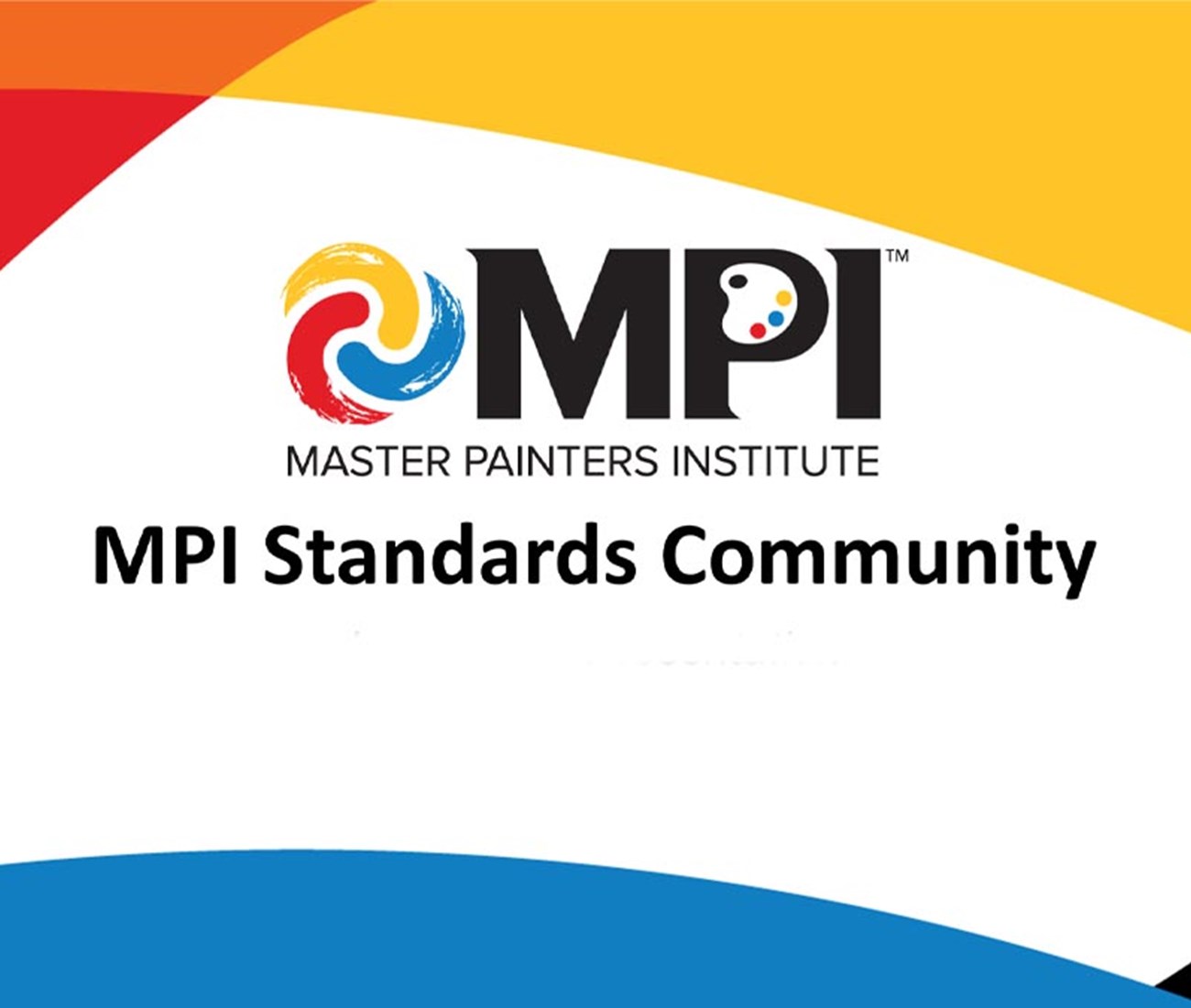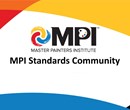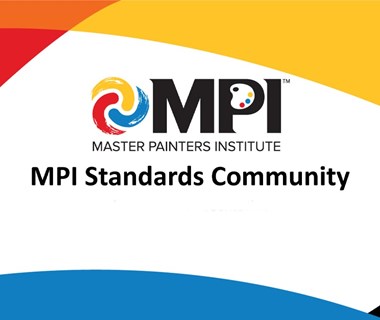To MPI or Not To MPI?


Written by Juste Fanou
Some months ago I received a cut sheet from one of our contract administrators. He was asking if a certain painting product was suitable for use on his project. Considering that at the time our office specified painting solely using MPI numbers, there was very little information available to specifically guide me through this task.
I therefore had to turn to more experienced colleagues, product reps and project managers to assist me. In this instance, the office master specification that was intended to be my “go-to” resource proved to be utterly inadequate. A lot of water has passed under the bridge since then, and thankfully our master specification has also undergone major changes. As a company, we’ve decided to utilize a hybrid method of specifying painting because we realized that MPI numbers on their own were not the most useful tools to properly write and administer the contract documents.
What is MPI?
According to their website, The Master Painters Institute (MPI) is an association “…committed to high standards in painting. [They] educate painting professionals and ensure standards through painting inspection, performance-based standards and lab testing.” Throughout the years, MPI has become the reference for testing and certifying paint products, as well as guiding architects and designers in establishing acceptable standards of quality for their projects. Using a complex classification system, the MPI guide specifications and supporting documents list and categorize painting products (primers, topcoats, stains etc.) according to the following:
- substrates
- chemical compositions of the coatings
- location within the facility (i.e. exterior or interior)
Since its inception, this system has gained widespread support from major stakeholders including government agencies, commercial master specification publishers, and of course consultants. An inherent step in developing this classification scheme was for MPI to maintain a certain level of control over the products that could become part of these paint systems, and thus the “Approved Products Lists” was developed. The MPI Approved Products List is a biannual publication that provides a listing of products that “are approved for their use under specific MPI Systems in the MPI Quality Assurance Program. [Such products] are not approved for use on all substrates or under all conditions.” This “Approved Products List” has been met with such enthusiasm by industry stakeholders that it has become the de facto qualified product list for many organizations, including the US Navy, the Canadian Government National Master Specification and AIA’s MasterSpec among others. However, despite the enduring success of these guide specification documents in these organizations, one cannot help but also consider how successful these standards have been in providing contract administrators with the tools to enforce the specifications on the job site.
The Problem with MPI
Standards are essential in our professions. They are at the core of the process upon which we rely to establish quality. Without standards, designers would be at the mercy of manufacturers and would have no baseline to establish and evaluate the various characteristics of the building materials that they must specify on their projects. Standards should therefore be welcome and embraced in every industry that decides to adopt them. However, standard-setting agencies should also remember that they bear the responsibility to ensure that their specifications do not abate creativity among users, but rather encourage and foster innovation. One way to achieve this is to measure quality using predetermined and observable performance indicators instead of prescriptions. This is simply because prescriptive standards, by their very nature, are in diametric opposition to innovation and change. *
Unfortunately, despite all its good intentions the MPI classification system dangerously leans towards the category of those innovation-bashers. Since MPI initially classifies its products and systems based on physical and chemical compositions rather than desirable performance; manufacturers that are able to achieve equivalent levels of quality using unique material compositions can often find themselves at odds with the system as it does not provide a listed category for their products. The organization itself agrees with this point since it publishes the following statement on its website “…The MPI Approved Products List is shown here solely for the guidance of the user of these manuals. MPI does not claim that products on this list have any greater validity than commercial products not contained in this list.”
As a result, designers and specification writers who use a clause similar to “Only Products appearing on the MPI Approved Products List shall be accepted for use on this Project” may be missing out on opportunities to provide high quality coatings with additional benefits for use on their projects.
It’s just paint after all. Or is it?
All coatings are not created equal. It just takes a little bit of observation to realize that environmental conditions can often result in the untimely de-lamination or breakdown of architectural coatings. It is therefore crucial for designers and specification writers to properly assess and recommend coatings that can withstand the intended conditions of use without causing the building owner additional maintenance costs due to premature failure. Can solely using the MPI guide specifications and the MPI Approved Product List really aid in making these recommendations? Probably not. If one takes the MPI interior system for providing a latex sealer and topcoats over a gypsum substrate “INT 9.2A” as an example, it is described in MPI’s Manuals as follows: 1 coat interior latex primer sealer (MPI#50) and 2 coats interior latex (#53, #44, #52, #43, #54, #114). Now, let us quickly analyze how such a specification could quickly strip a poor contract administrator of all possible authority.
According to MPI’s Approved Product List, there are about 82 approved products under the MPI #50 category alone (http://www.specifypaint.com/APL/paintinfo_APL/MpiNumber.asp?ID=50000). There are hundreds more available to choose from in the other listed MPI categories. As a result, this gives carte blanche to the bidders to select any (read: the cheapest) of the available products. One may argue that only allowing 3 or 4 manufacturers to bid on the job might help preserve an acceptable standard of quality. Granted that this may effectively reduce the number of choices available to the bidders, yet it does nothing to ensure quality or to promote a fair and competitive bidding process. Using Sherwin Williams as an example, we note that this company has about 8 products listed under the MPI #50 category. A conversation with any of their product representatives will quickly demonstrate that these products do not all perform equally.
To MPI or Not To MPI? Towards a viable compromise.
It is not the purpose of this article to suggest that MPI specifications or product classifications are bad. On the contrary, they are excellent tools to use to establish a minimum level of quality for your projects.
They are quick, easy-to-use and provide us with the assurance that testing, verification and certification have been performed by a recognized and independent third party. Yet, it is important to note that for certain jobs, minimum standards are simply not enough. Providing coatings for environments scheduled to receive aggressive maintenance regimes, high chemical or physical abuse or in locations subject to high environmental pollution is no easy task. It is therefore paramount that the right coating systems be specified for application in those locations. Since MPI, through its painting systems, already provides us with the basis for this exercise; all we need to do is select 3 or more acceptable products from each category and limit the Contractor’s selections to those products.* MPI systems and the respective product numbers need not be touched, unless of course we intend to specify unique conditions that are not covered in their painting manual.
In the manner that you would probably never exclusively rely on performance based specifications to list other building materials (flooring, building envelope materials, glazing etc.), painting must also be specified using the methodologies that would be employed in other Sections of the Project Manual. That is, use standards for reference purposes but identify specific products and manufacturers by name lest you transform your project into a chaotic battle royal for the bidders.








